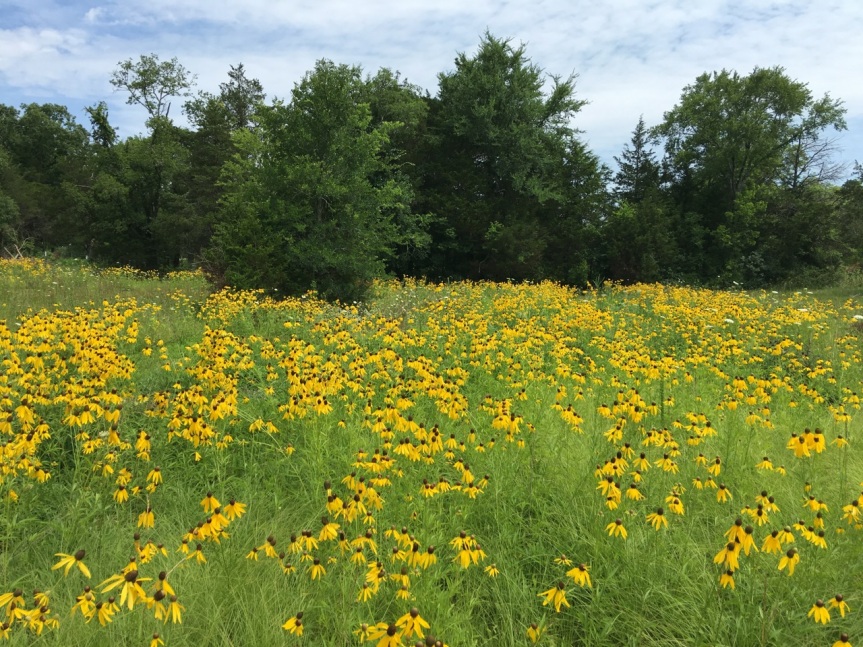Yesterday’s Division of Natural Areas hike was at a glade new to me: John and Hester Lane Cedar Glade. Look what happens to a cedar thicket after a managed burn:

I’ve never seen so many prairie coneflower (Ratibida pinnata) in one place.
How long had those seeds slept in shade till freed by fire?

Other firsts:
I saw the newly described grasshopper species Melanoplus ingrami, an endemic to our glades named in honor of Buddy Ingram: a park ranger at Cedars of Lebanon.
Here’s a short video from Tennessee Wild Side about the new species, and here’s the official species description published in 2011.

A seedpod for wild blue indigo, a.k.a. false blue indigo (Baptisia australis). I love the greasy marks where seeds developed against the inner hull.

I was reminded—again—that the tiny orange leaves peeping from gravel are young Prairie Tea plants: Croton mononthogynus.

I’d heard the name Prairie Tea but hadn’t considered the “tea” part till Sunny, our leader, told a story about eating a leaf on a hike, just before her professor mentioned the leaves were toxic. We all agreed Prairie Tea is a dumb name for a plant you can’t use for tea. One source says the common name comes from a likeness to cultivated tea from China and India (Camellia sinensis), but really, did whomever coin “Prairie Tea” actually have experience with living tea specimens?
Still, I wondered. Maybe the common name pointed to a medicinal tea, carefully prepared? I checked my favorite edibles website (Eat the Weeds), but he does not include this plant, which makes me suspect it is truly off-limits, nor did I find it in any of my foraging books at home. But I found references to edibility elsewhere. Two warnings: it can irritate skin and is a lookalike with other species in the Euphorbia / Spurge family which are unequivocally toxic. I’m not ready to try it, even if I could find a source free and legal for the taking.

Several wet washes ran north/south through the property: leftovers from recent rain. In glade land, rainwater either falls through karst topography to hidden streams or sinkholes, or glides along gravel and pavement, or in this case, washes down . . . to what? I was too hot to even think to track a wash to a conclusion. But usually, the soil is too thin to hold much water, not till you get to an area with soil deep enough to support hardwoods.

One troubling observation: we noticed the new neighbors on the other side of the barbed wire had started digging trenches and piling rocks. This makes me nervous. It highlights the vulnerability of these protected areas. Each managed glade is an island in a sea of private land ripe for development.
Take just one species—the wingless grasshopper I mentioned: it’s marooned. Beyond the barbed wire there is no protection, and it can’t very well GPS itself to the next one. I wish our managed glades could be connected, like those big wildlife corridors planned elsewhere.

Many thanks to botanists Sunny Fleming and Chris Fleming for leading us through this amazing place.
The John and Hester Land Cedar Glade isn’t officially open to the public yet, but plans are in motion to create a public trail by 2018. Here’s a description. Luckily, TDEC’s Division of Natural Areas usually schedules at least one public hike per year.
A pdf of the Division of Natural Area’s 2016 field trips and events is here.

Love this blog!